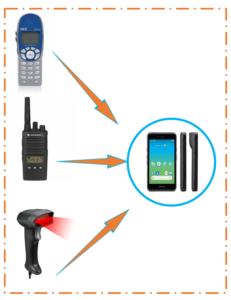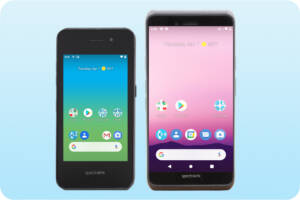What is Enterprise Mobile Computing 2.0?

By greg henry, director of retail business development
 A mobile computer is a device that is “small, lightweight, portable and containing Internet access,” and are generally devices that can be used while in motion.1 The mobile computer gained wide popularity in retail, distribution, and transportation during the 1990s as a tool that significantly increased mobile worker productivity, and its’ popularity continues to steadily increase and expand to other industries.
A mobile computer is a device that is “small, lightweight, portable and containing Internet access,” and are generally devices that can be used while in motion.1 The mobile computer gained wide popularity in retail, distribution, and transportation during the 1990s as a tool that significantly increased mobile worker productivity, and its’ popularity continues to steadily increase and expand to other industries.
Over the years, the technology of the mobile computer has drastically evolved, including more advanced operating systems (DOS, Palm, Windows Mobile and Android), faster processors, improved displays, increased ruggedization, and smaller form factors (visit this timeline provided by Old Dominion University for more information on the evolution of the mobile computer). While the tools continue to improve, the basic workflows they support remain similar. This is what I refer to as Enterprise Mobile Computing 1.0.
So, what is mobile computing 2.0 and why does it matter?
 Enterprise Mobile Computing 2.0 is focused on furthering worker productivity by reducing the number of devices a mobile worker must interface with during a given shift. It is about technology convergence, or the integration of multiple purpose-built devices into a single, highly integrated multi-function device.
Enterprise Mobile Computing 2.0 is focused on furthering worker productivity by reducing the number of devices a mobile worker must interface with during a given shift. It is about technology convergence, or the integration of multiple purpose-built devices into a single, highly integrated multi-function device.
For example, today’s typical retail employee is required to interface with multiple devices throughout their day. They have a wireless handset to take incoming customer calls, a walkie-talkie to communicate with other store associates, and a mobile computer to perform price and inventory management functions.
They may also be required to interface with a desktop PC to receive product training and punch a time clock to capture payroll information. EMC2.0 focuses on using the power of today’s mobile computer to combine these disparate devices and workflows into a single device reducing the number of devices an employee is required to carry and IT is required to support. This is not unique to retail as it applies to a wide range of mobile workers in healthcare, hospitality, warehousing, and so on.
Spectralink is leading the way in Mobile Computing 2.0 with our Versity family of enterprise-grade, Android-based smartphones. A single device that performs the work of several, Spectralink’s Versity 92 and 95 integrate our leading-edge, uncompromised wireless voice capabilities and PBX/ UCaaS integration support within a rugged, high-performing Android mobile computer. Both Versity devices enable communication between employees or with customers, run your traditional barcode scanning and information-based mobile workflows, and can also provide on-demand video training capabilities, emergency notification, and alerting to support employee safety and time and attendance capture via fingerprint recognition*.
At Spectralink, we make mobility work by keeping up to date with the latest trends in mobile computing to meet your evolving workforce needs.
For more information on the Versity product family please visit https://www.spectralink.com/products/wi-fi/smartphones/. And to schedule a demo of any of our devices, reach out to [email protected].
* Versity 95 only
1Cartmell, Paul. “Mobile Computer Definition.” Techwalla.
 Greg Henry, Spectralink’s Director of Retail Development, is a seasoned technology executive with over 30 years of experience in the wireless and mobile computing industry. He brings a depth of retail experience focused on empowering front-line worker productivity and increasing customer service capabilities.
Greg Henry, Spectralink’s Director of Retail Development, is a seasoned technology executive with over 30 years of experience in the wireless and mobile computing industry. He brings a depth of retail experience focused on empowering front-line worker productivity and increasing customer service capabilities.
Connect with Greg on LinkedIn!

